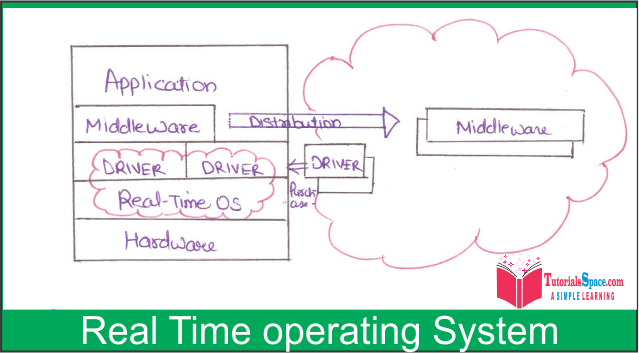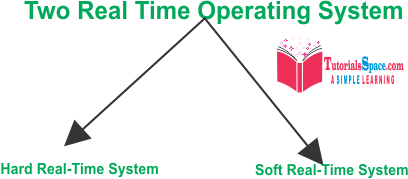
Real-Time Operating System
A Real Time operating system is defined as a data processing system in which the time interval required to process and response to inputs is so small that it controls the environment. Time taken from input to output task is Response Time.

A Real- Time operating System must have well- defined, fixed time constraints, otherwise the system will fail.
For example: Scientific Experiments, Medical Imaging Systems, Industrial Control System, Weapons System, ROBOT, Air Traffic control system etc.

Hard Real Time Systems:
It guarantees the 'on-time' completion of 'CRITICAL ' Tasks.In this secondary storage is limited or missing and the data is stored in ROM. In this systems, VIRUAL MEMORY is all most never found.
Soft Real Time Systems:
A critical Real-time task gets priority over other tasks and retains the priority until it completes. These system have limited utility than Hard-Real Time Systems.For Example:-
- Multimedia,
- Virtual Reality,
- Advanced Scientific Projects like under sea exploration and planetary Rovers etc.
Task Shifting:Less time is needed in shifting the task which is around 3 micro seconds.
Focus on Application: Focus on application which are running and usually give less importance to the other application residing in waiting stage of life cycle.
Used in Embedded System: Due to small size of program RTOS can also be used in Embedded System like in Transports and others.
Error Free: RTOS is error free so it has no chance of errors in performing tasks.
24-7 System: RTOS can be used for any applications which run 24 hours and 7 days because it does less tasks-Shifting and give maximum output.
Memory Allocation: Best Managed in these.
Disadvantage:
- use heavy system resources
- low Multi Tasking
- Complex Algorithm
- Device Driver And Interrupt Signals
- Thread Priority
- Expensive
- not easy to program
- low Priority task: LPT- Not get time to run
03-Operating System-Real Time Systems - Operating System
CLICK HERE TO Download This PDF NOTES
